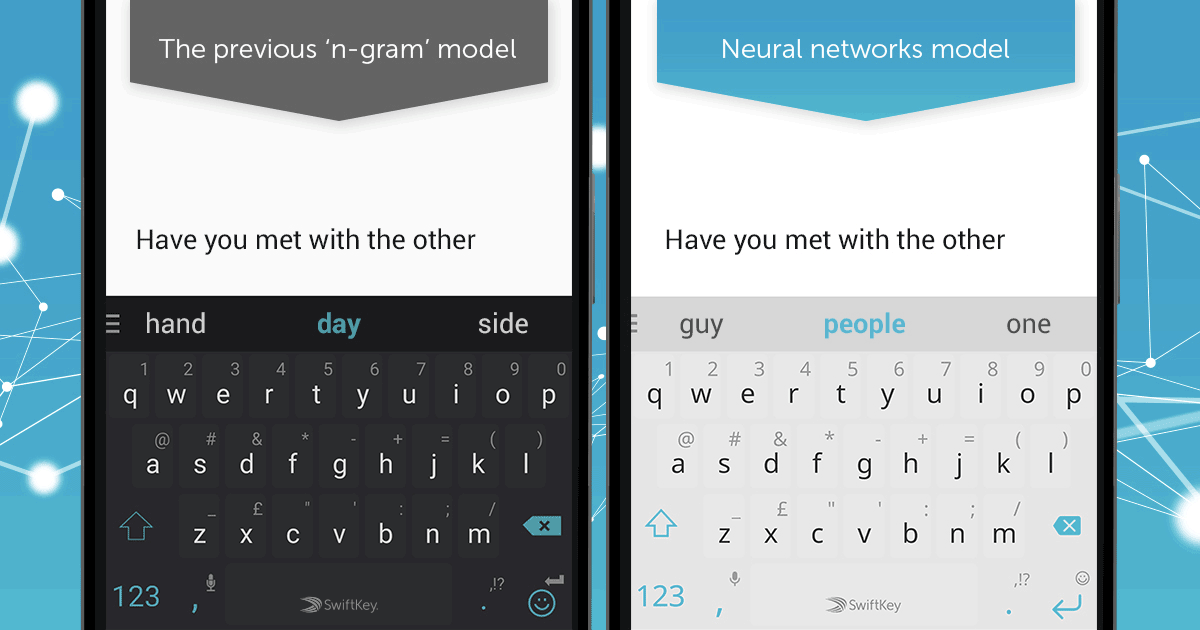When Microsoft acquired SwiftKey this year, we knew something big was going to come. But until now, there weren’t many major changes in how the smartphone keyboard worked. Today, however, everything is about to change. The company started rolling out a new version of its popular keyboard for Android today that combines the features of its Neural Alpha, released last October, and its regular app in order to serve better predictions.
Traditionally, SwiftKey used what we call the n-gram algorithm to serve predictions. This is an algorithm which works on the principle of matching pairs of words with prior usage. Essentially, the system reads the last two words written, processes them and checks them against a large database. Using this, it then comes up with the three most probable words that could complete your sentence.
While that’s a great approach, it sometimes made no sense as the words were never matched with their meanings and linguistic use. We just got predictions that coincided our use. Also, the database is massive and continuously growing exponentially. Overall, the efficiency of such a model is quite low and essentially becomes impractical after a certain limit.
To counter this problem, SwiftKey initially tried to boost its n-gram engine with less fallible, personalized data. Phrases used commonly were recorded and you could link all your social media accounts to help with prediction too.
[dfads params=’groups=39560‘]
But that approach, too, has its drawbacks.
Keeping that in mind, SwiftKey, last year launched the Neural Alpha that got rid of all those extra layers and stuff that would lessen the efficiency of the keyboard. Instead, it relies completely on a neural network.
For those who don’t know what a neural network is, it is a loose term that defines an algorithmic system that works similar to the way our neurons (brain cells) work. It will process data and continuously learn from past experience, making it one of the most efficient types of AI.
Training its network was the tricky part, but to do it, SwiftKey used millions of complete sentences and applied “tags” to each word. These tagged words taught the system the actual meaning/structure of a sentence. This turns the whole setup into a large database which links words not by their meaning, but by their linguistic use.
It might seem a bit complicated, but at its core, the design is quite basic.
You might wonder why it took the keyboard developer a year to make the new technology mainstream. There are multiple reasons to why this happened. Until recently, the algorithm worked by using the GPU, which isn’t quite standard on most smartphones. Secondly, the Neural Alpha may be better than the n-gram system but SwiftKey’s personalised predictions could sometimes outperform it.
Regardless, today’s update of SwiftKey will combine both its n-gram algorithm and the Neural Alpha to make predictions even faster and better.







1 comment
Very Helpful Information